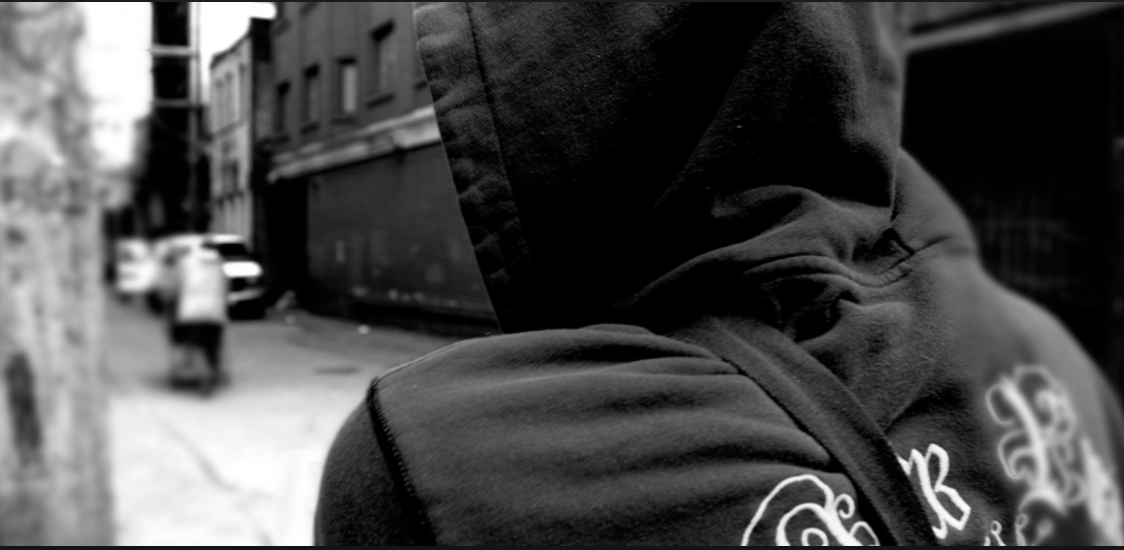Won’t Somebody Think of the Children?

I remember my first time buying cannabis. I was 15 years old. It was in Edmonton, Alberta, in the summer of 1986.
I was sent on my bike by my friend to purchase 20 dollars worth of hashish. Cannabis flowers were a rare treat in those days. Teens either had a family member purchase for them or had to score from the only people we knew who would dare sell to a teen – the street dealers of Jasper Avenue.
When I arrived at “Beaver Hills Park” (which in the 1990’s became “Beaver Flats Park” due to the removal of the hills to deter drug dealing) a street dealer approached me and asked me the magic, one-word question:
“Hash?”
I nodded. He then asked me if I wanted a gram or a “2 chip” which was two-grams. I told him I wanted a single gram. He reached under his top lip and pulled out a spit-covered chunk of hash and then split it in two, gave me the small half and took my 20 dollars. Street dealers kept their stock in their top lip just in case the police grabbed them – it made swallowing the evidence and avoiding arrest easier to do.
I took my spit-covered gram back to the South Side. My friend and I were elated. On many occasions we would be unable to find anyone to sell to us – often we would go to great lengths and horribly unsafe situations to score, only to be offered much harder drugs as substitutes by sketchy black market dealers.

Translation: “suspected small-time dealers” (young people caught selling or buying small amounts of hashish) “patrons of Arizona Pizza” (people selling or buying hashish at Arizona Pizza – right across the street from Beaver Hills Park.) I was almost busted at Arizona Pizza during “Operation Butler” – the hash I was about to buy was sold to another person just as the cops burst in. Newspaper clipping from the Edmonton Journal, January 31st, 1987, p. 11
The real dangers to teens from cannabis are police arrests and/or a small minority of dealers who were unconcerned with the safety and well-being of their customers. There was always a danger of death from a drug raid gone wrong, or from violence in prison, or from black-market related violence, or from harder drugs that teens would turn to if they could not find soft drugs like cannabis. But there were never any cannabis overdose deaths, or violence caused by the effects of cannabis.
Google the terms “teen mortality Canada.” What makes the front page?

Car crashes. Suicide. Prescription drug overdoses. Alcohol overdoses. What you don’t see is: Marijuana.
Yet, every time one of these pot prohibitionists – and lately, pot “over-regulators” (pot monopolists) – opens their mouths, they say it’s for the sake of the young people – to save them from mis-developed minds.
What these people never want to talk about are the things actually killing our teens.
The reason you don’t hear real discussion about the actual threats is because what the talking heads want is an evil force to point fingers at, something to have a “war” on so they look busy. Because real change is hard and the truth will liberate us from all their demands for compliance.
Car crashes are in the top three causes of death among teenagers where I live in British Columbia.

Image from https://www2.gov.bc.ca/assets/gov/birth-adoption-death-marriage-and-divorce/deaths/coroners-service/child-death-review-unit/reports-publications/child_mortality_in_british_columbia_2017-2021.pdf

Image from https://www2.gov.bc.ca/assets/gov/birth-adoption-death-marriage-and-divorce/deaths/coroners-service/child-death-review-unit/reports-publications/child_mortality_in_british_columbia_2017-2021.pdf

Information from https://www2.gov.bc.ca/assets/gov/birth-adoption-death-marriage-and-divorce/deaths/coroners-service/child-death-review-unit/reports-publications/child_mortality_in_british_columbia_2017-2021.pdf

Image from https://www.cbc.ca/news/canada/british-columbia/distracted-driving-texting-will-become-largest-cause-of-teen-deaths-1.3488719
Among Canadians aged 15 to 24, suicide ranked second among the most common causes of death during 2003-2007, accounting for one-fifth of total mortality.

Image from https://www.canada.ca/content/dam/phac-aspc/documents/services/publications/healthy-living/suicide-canada-key-statistics-infographic/ENG.pdf

Image from https://www.canada.ca/content/dam/phac-aspc/documents/services/publications/healthy-living/suicide-canada-key-statistics-infographic/ENG.pdf
As for substances that are legally bought and sold, according to the latest figures, the number of teen deaths from prescription drugs in Canada is second only to the United States. And heavy drinking, often an aggravating factor in death amongst teens, is so dangerous Ontario’s health ministry has said, “Alcohol-related trauma is a significant and preventable cause of death among young Canadians.”

Image from https://globalnews.ca/news/611646/canada-among-worst-for-teen-deaths-from-prescription-pills/

Image from https://odprn.ca/research/publications/measuring-the-burden-of-opioid-related-mortality-in-ontario-canada/

Image from https://www.canada.ca/en/public-health/services/reports-publications/health-promotion-chronic-disease-prevention-canada-research-policy-practice/vol-44-no-3-2024/accidental-substance-related-acute-toxicity-deaths-youth-canada-descriptive-analysis-national-chart-review-coroner-medical-examiner-data.html
Yet prohibitionists and liberal over-regulators choose to waste time and tax dollars on enforcing laws against pot – laws that make no sense.
The big ironic thing about teen mortality in Canada is with one policy change our government overlords would likely be able to reduce teen deaths from car crashes, suicide, prescription drug abuse and alcohol abuse is to give teens safe places to smoke pot in, remove the stigma from teen pot smoking, teach the genuine relative dangers of every drug and teach teens how to smoke pot properly so they get the maximum benefit from it. Those who care about teens should be saying this.
It’s all a smokescreen. Those who want to whip up parental hysteria and use it to their own advantage will keep lying about increasing psychosis and shrinking I.Q.s (that never seem to appear in the general population stats). This theory is a fear-tactic, and it’s been proven thoroughly wrong.
 Image from https://www.cannabisculture.com/content/2014/11/11/does-cannabis-inherently-harm-young-peoples-developing-minds/
Image from https://www.cannabisculture.com/content/2014/11/11/does-cannabis-inherently-harm-young-peoples-developing-minds/
It’s interesting to note that 300,000 Canadian children have food allergies – sometimes leading to death – but level of hysteria produced by our public health officials regarding this very real threat to human life is tiny in comparison to concern over cannabis – which unlike other accepted, popular, trendy products does not kill anyone.

Image from https://www.health.harvard.edu/blog/why-teenagers-eat-tide-pods-2018013013241
 Image from https://pot-facts.ca/kids-are-35-times-more-likely-to-go-to-the-hospital-for-eating-tide-pods-than-cannabis-edibles/
Image from https://pot-facts.ca/kids-are-35-times-more-likely-to-go-to-the-hospital-for-eating-tide-pods-than-cannabis-edibles/
The crazy thing is growing evidence indicates cannabis doesn’t even get pre-teens high.

Image from page 32 of The pharmacological history of cannabis, January 2014, Ethan Budd Russo https://www.researchgate.net/publication/312414874_The_pharmacological_history_of_cannabis
In personal experience, it certainly helped me survive my teen years without the need for much more dangerous synthetic anti-depressants or relaxants. And truly, all evidence identifies cannabis is the safest and most effective anti-depressant and relaxant in the world.

Image from https://www.stressedanddepressed.ca/wp-content/uploads/2015/04/A-Brief-History-of-the-Use-of-Cannabis-as-an-Antidepressant-and-Stimulant2.pdf

Image from https://www.stressedanddepressed.ca/A-Brief-History-of-the-Use-of-Cannabis-as-an-Anxiolytic-Hypnotic-Nervine-Relaxant-Sedative-and-Soporific.pdf
Unless the pot activist community loses their fear of parental hysteria and starts to talk about teen cannabis use in realistic ways, we are doomed to suffer from over-regulation, monopoly and continued prohibition/persecution … because the bad guys are going to continue to lie about teens and cannabis – guaranteed. Apart from “inherent impairment” in cannabis-using drivers, “pot makes teens stupid/crazy” is the only weapon they have left to use against us … and it’s working really well for them.
The first time a kid tries cannabis, it is a revelation, they realize the plant can help them, and the powers-that-be tell lies.
Marsha Rosenbaum, a researcher with 40+ years experience, summed up the situation perfectly:
“No drug, including marijuana, is completely safe, especially for teenagers. Yet the mischaracterization of marijuana, as discussed above, may be the Achilles’ heel of current drug prevention approaches because such messages too often contain exaggerations and misinformation that contradict young people’s own observations and experience. As a result, many teens have become cynical and lose confidence in what we, as parents and teachers, tell them.”
It’s time we educated ourselves, found the courage to talk openly about cannabis and teens. In reality, it’s the only way to prevent them from having to spend their hard earned cash on a chunk of hash soaked in street dealer spit.



